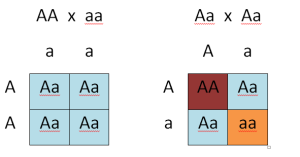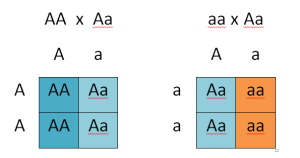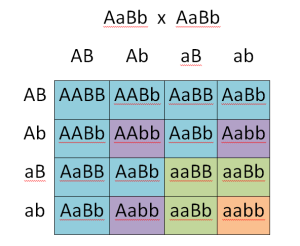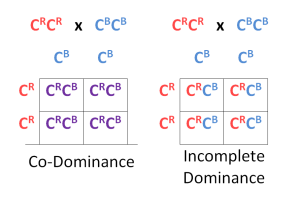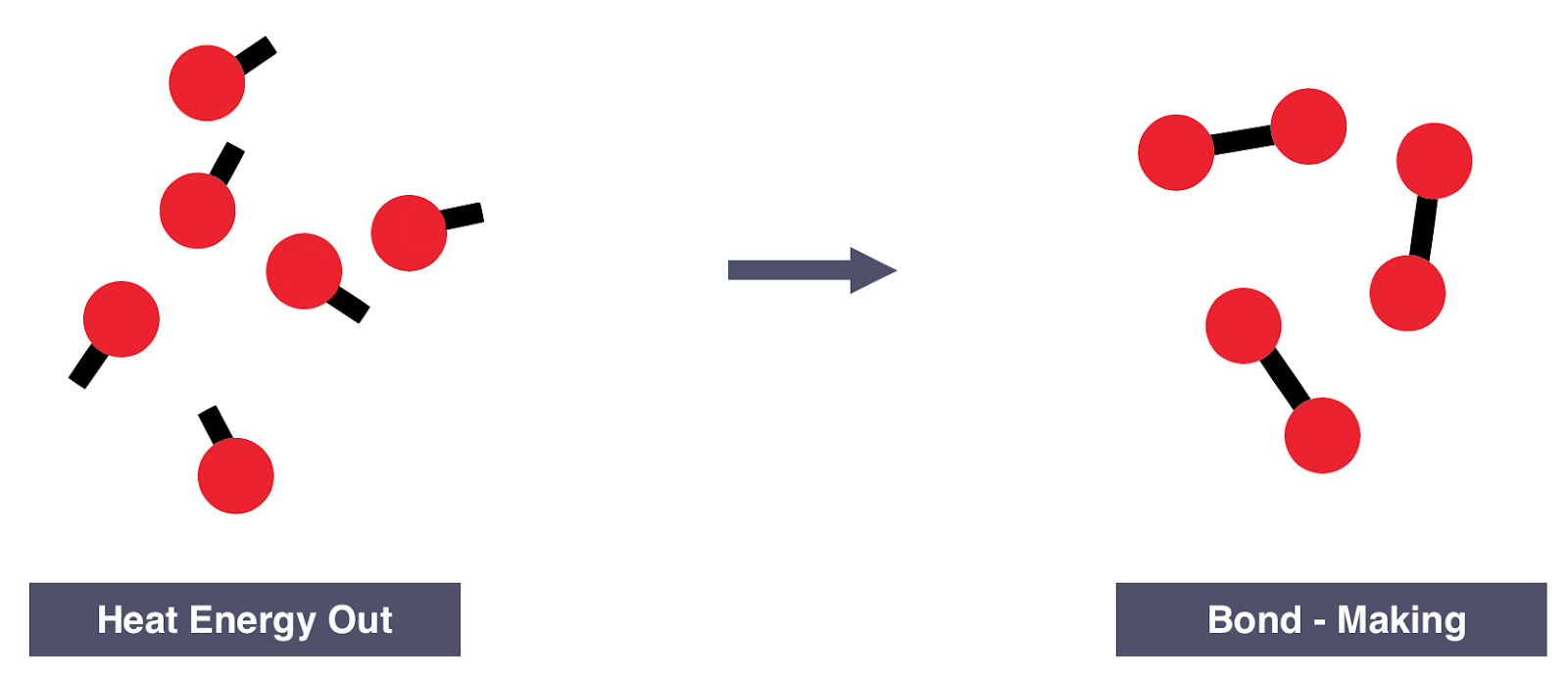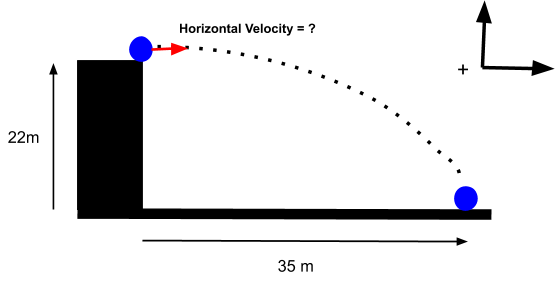Overview:
Punnett squares are diagrams designed to predict results of classic breeding experiments. They support Mendelian inheritance, as well as the laws of segregation and independent assortment. During meiosis, chromatids are separated such that each gamete receives only one allele. Additionally, different genes are assorted and inherited independently from on another; the probability of one phenotype does not affect the probability of another.
To construct a Punnett square, the genotypes of both parents must be known. One parent’s alleles are listed across the top of the table, and the other parent’s alleles are listed down the left hand side. The resulting offspring genotypes are produced at the intersection of the parent’s alleles. With the results of the Punnett square, the probabilities of specific genotypes and phenotypes can be determined.
Monohybrid Cross:
Figure 1: Punnett squares showing a monohybrid cross between a) a homozygous dominant and homozygous recessive parent and b) heterzygous dominant parents.
The most common Punnett square is that of a monohybrid cross. It shows the alleles of only one gene. When a homozygous dominant individual is crossed with a homozygous recessive individual, the offspring produced will have the heterozygous genotype and show the dominant phenotype. When these heterozygous individuals are crossed, three different genotypes are produced in a ratio of 1:2:1. The phenotypic ratio, however, is 3:1. These monohybrid crosses support the laws of Mendelian genetics.
Figure 2: Punnett square showing a monohybrid cross between a) a homozygous dominant and heterzygous dominant parent and b) a heterozygous dominant and homozygous recessive parent.
Variants of the monohybrid cross may also be produced to determine the probabilities of any one gene. A heterozygous individual crossed with a homozygous dominant individual will always produce offspring with the dominant phenotype. Otherwise, a heterozygous individual crossed with a homozygous recessive individual will always produce offspring with a phenotypic ratio of 1:1. Both these variants have genotypic ratios of 1:1.
Dihybrid Cross
Figure 3: Punnett square showing a dihybrid cross with parents that are heterzygous dominant for both traits.
Dihybrid crosses involve the alleles of two individual genes. To apply the law of independent assortment, allele pairs must be determined. The probabilities involved with each gene are independent of the other, and the alleles of each gene are equally likely to be inherited. The possible pairs of alleles for one parent is written down the left side of the table, and the alleles of the other are written across the top of the Punnett square. The same process is used to determine the possible genotypes and phenotypes of the offspring. In a cross between two heterozygous individuals will produce a phenotypic ratio of 9:3:3:1.
Complete and Incomplete Dominance
Figure 4: Punnett Square showing a monohybrid cross for a) a trait that is expressed co-dominantly and b) a trait that is expressed as incomplete dominance.
The same process can be applied to other modes of inheritance, such as co-dominance and incomplete dominance. The laws of segregation and independent assortment also apply to these cases. When a gene is inherited through co-dominance, two homozygous individuals will produce offspring with an intermediate phenotype. In the case of incomplete dominance, two homozygous individuals will produce offspring that show both phenotypes simultaneously.
Punnett squares are regularly used by geneticists to predict outcomes of crossings between individuals. A geneticist can provide probabilities for certain genotypes and phenotypes before the breeding takes place. This plays a significant role when studying hereditary diseases and illnesses. Modes of inheritance can also be determined through experiments with true-breeding individuals (i.e. AA x aa) or heterozygous individuals (i.e. Aa x Aa).
Interested in biology tutoring services? Learn more about how we are assisting thousands of students each academic year.
SchoolTutoring Academy is the premier educational services company for K-12 and college students. We offer tutoring programs for students in K-12, AP classes, and college. To learn more about how we help parents and students in Hyattsville, MD: visit Tutoring in Hyattsville, MD


